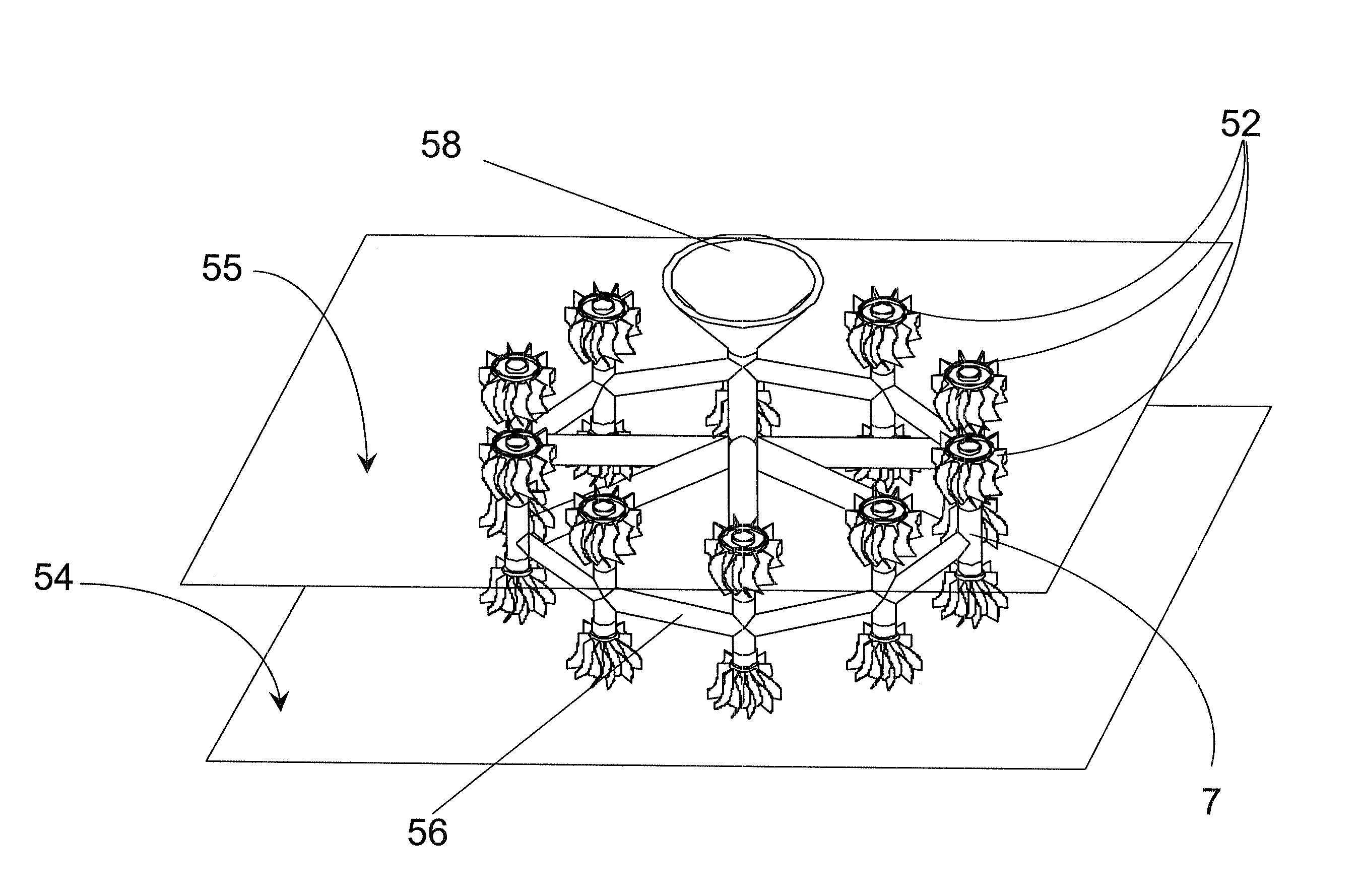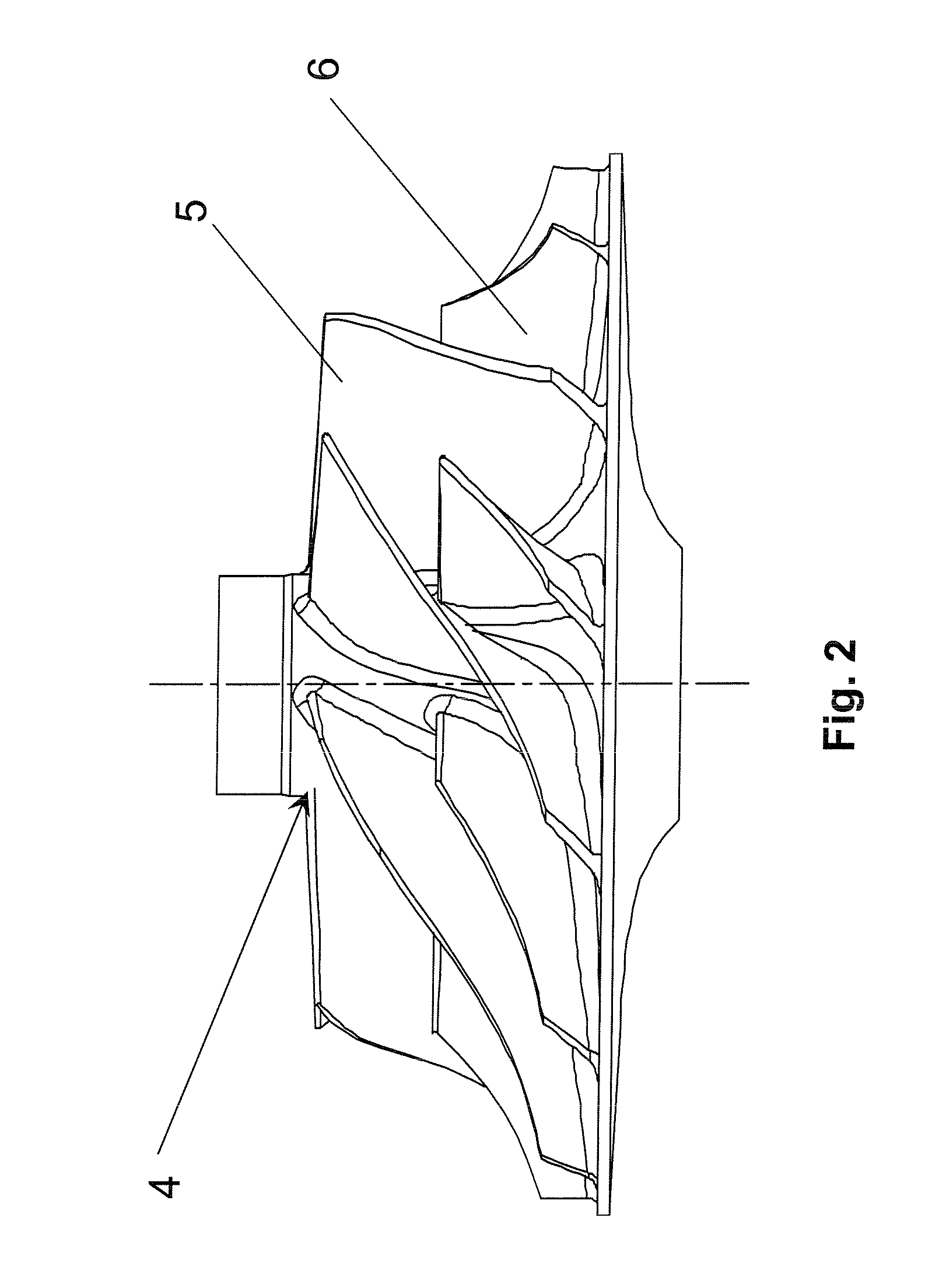Method for rapid generation of multiple investment cast parts such as turbine or compressor wheels
a technology of turbine or compressor wheels and investment casting, which is applied in the field of investment casting, can solve the problems of laborious and inaccurate techniques, difficult to form the sacrificial positive pattern necessary for investment casting, and excess capacity of conventionally employed aluminum alloys, so as to reduce the cost and lead time of parts, reduce the cost of parts, and eliminate the effect of capital expenditure for tooling
- Summary
- Abstract
- Description
- Claims
- Application Information
AI Technical Summary
Benefits of technology
Problems solved by technology
Method used
Image
Examples
second embodiment
[0069]FIG. 6A illustrates only one turbine wheel of the “tree” of FIG. 5, showing in greater detail the sacrificial pattern (52), of FIG. 6A which is repeatedly dipped in a refractory slurry until the thin blade sections (8) become thick ceramic shells (12) as shown in FIG. 6B. During this process, the sprue (7) also acquires a ceramic shell with an outer surface (11) as well as an inner surface (10) surrounding the sacrificial core which will be removed to form the channel through which the molten material will travel to the wheel casting. This process produces the part depicted in FIG. 6B. This last operation, translating the image of FIG. A to the image of FIG. 6B is typical of the investment casting process. The end result of the above process becomes the end result of the invention, which is generated in a different and innovative manner.
[0070]A second embodiment of the invention, embodiment (B), will be explained by reference to FIG. 7. The methodology of a typical rapid proto...
first embodiment
[0075]In case (A), the invention: the present invention completely eliminates the capital cost of tooling, which can range from $20,000 to $150,000. In case (A), the patterns are made using technology which was formerly used only for rapid prototyping and these are merged with the historical process, in place of tooling. This reduces what was a 6 basic step process down to 5 basic steps.
[0076]In case (B), the second embodiment of the invention: the tooling, positive patterns and dipping and drying process are totally removed and replaced by a process in which the shell is produced as the first step in the foundry process. This takes what was a 6 basic step process down to 3 basic steps. The remaining 3 steps are eliminated.
[0077]The short term gains will be lowered capital costs, the longer terms gains will be lower capital tooling cost and no drying rooms being required.
[0078]Additional gains are realized in:[0079]Taking at least 4 days out of the 5 formerly required for drying. Be...
PUM
| Property | Measurement | Unit |
|---|---|---|
| lead time | aaaaa | aaaaa |
| melting point | aaaaa | aaaaa |
| exhaust energy | aaaaa | aaaaa |
Abstract
Description
Claims
Application Information
 Login to View More
Login to View More - R&D
- Intellectual Property
- Life Sciences
- Materials
- Tech Scout
- Unparalleled Data Quality
- Higher Quality Content
- 60% Fewer Hallucinations
Browse by: Latest US Patents, China's latest patents, Technical Efficacy Thesaurus, Application Domain, Technology Topic, Popular Technical Reports.
© 2025 PatSnap. All rights reserved.Legal|Privacy policy|Modern Slavery Act Transparency Statement|Sitemap|About US| Contact US: help@patsnap.com



